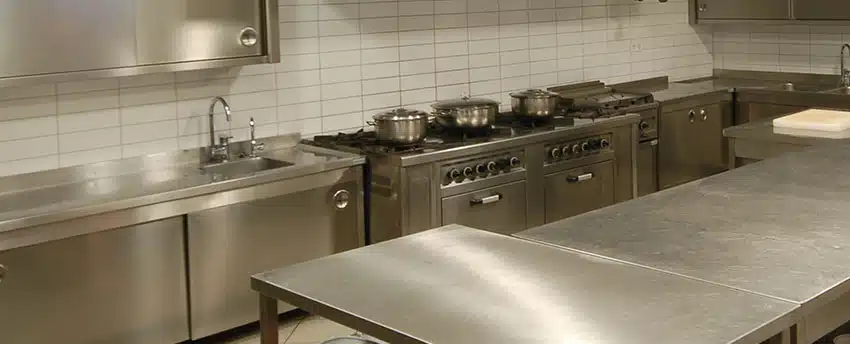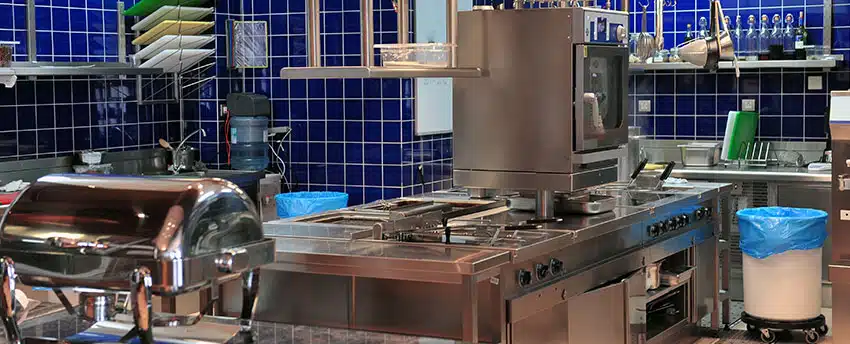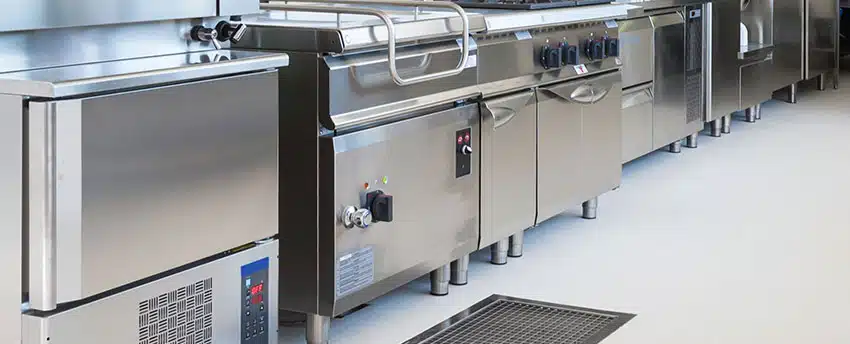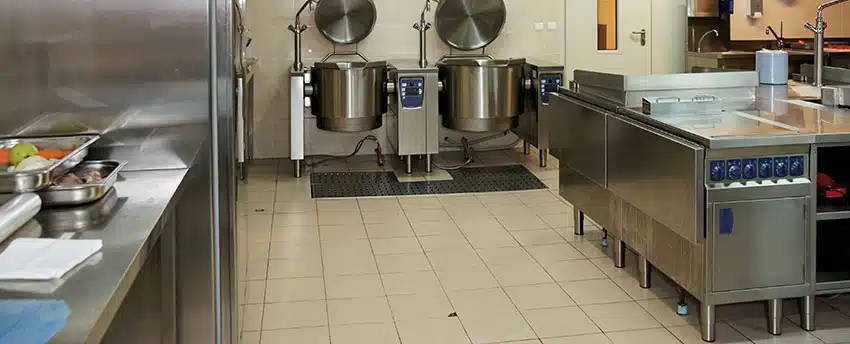Nov
How To Fix A Commercial Dishwasher That Won’t Clean Dishes?
- 2023
- AirExpress
- To Write First
You need clean dishes to serve your customers food, but your commercial dishwasher is showing problems and the dishes are not coming out clean. Your staff member will have to clean dishes manually when the kitchen runs out of clean dishes, which will increase the workload and slow down your service. Therefore, you must have it fixed by a commercial kitchen appliance repair expert quickly.
In case you want to do something yourself, here are some things to check if your commercial dishwasher won’t clean dishes.
Change The Detergent
A detergent makes it easier for water and the dishwasher to clean the dishware. However, some detergents may not go well with the dishes, types of stains, or the type of dishwasher you have while some detergents are outright bad.
So, your commercial dishwasher not cleaning dishes may be because of the detergent. Therefore, try changing the detergent and determine the right amount you need to add for each cycle.
A simpler way to choose a dishwashing detergent is to check out which detergents similar restaurants or canteens are using and use the same one if your dishwasher is also similar.
If you want to know which detergent is the best, it depends on various things. However, a good detergent should produce less foam, could break down dirt on the dishware, could remove scale, and must not be corrosive or have volatile substances.
You should make the decision factoring in your dishwasher whether it’s a high-temperature dishwasher or a low-temperature one. You will need a sanitizing chemical for low-temperature dishwashers while for high-temperature models, you don’t need any.
If you don’t want the slightest change in your food or drinks’ flavor, don’t use low-temperature sanitizers and use a high-temperature dishwasher.
Use Rinsing Aid
If the dishes come out comparatively clean, but you notice spots on them later, they may be due to hard water or mineral deposits on the dishware. You can add a rinsing aid in the final cycle to avoid these marks on the dishes, glasses, and other items.
A rinsing aid is 90% water and 10% other things like alcohol, citric acid, etc. It reduces the surface tension of water so it’s removed from the dishes more easily. As water is removed from the dishes before drying, the minerals that cause spots are also removed with water.
You should correctly determine how much rinsing aid to use depending on the dishwasher and the hardness of the water.
Install A Water Softening System
The last point was about removing mineral buildup on dishes that is caused by hard water. However, hard water also causes other problems even if you use a rinsing aid for resolving one problem.
Hard water reduces foam formation and thus reduces the cleaning ability of water even when detergent is used. This may be why your commercial dishwasher is not cleaning dishes well enough. You will need to use more detergent than usual and may have to increase the wash cycles to get clean dishes which will reduce the efficiency of the dishwasher and increase dishwashing costs.
A better method of fixing this problem is the installation of a water softener. It’s a type of water filter that gets rid of minerals from water which are responsible for scale buildup on dishes.
As you will use a water softener, your detergent will work better, your dishwasher will be more efficient, and you won’t need to use large amounts of rinsing aid.
Clean The Dishwasher
Hard water doesn’t only cause spots on dishes but also leaves white scales or limescale inside dishwashers and other appliances as well. This can clog critical parts of the dishwasher that help in cleaning the dishes.
So, whether you install a water softener or not, make sure you or your staff clean the dishwasher at the end of every business day. During the cleaning process, remove food particles, gunk, and debris from the dishwasher first before thoroughly rinsing and washing the interior of the dishwasher with warm water. Then, allow it to drain.
After this, clean the spray nozzles with white vinegar to reduce limescale buildup on them. Empty and clean the filter of your commercial dishwasher. Afterward, move to the wash and rinse arms of the dishwasher and clean them.
Regular cleaning and descaling a dishwasher are two different techniques. You must be cleaning your dishwasher every day as mentioned above while descaling should be done depending on the hardness of water in your facility and how quickly the limescale layer forms on the interior parts of the dishwasher.
For descaling a commercial dishwasher, follow these instructions:
- Fill your dishwasher with water.
- Mix the descaling product in the water.
- Let it be for one hour.
- After an hour, run a complete wash cycle.
- Check the dishwasher for limescale. If there is still limescale, repeat this process.
- Once you have checked that there is no limescale left, drain the dishwasher.
- Fill the dishwasher again for a final rinse cycle.
- Let it air dry.
Rinse The Dishes Before Putting Them In The Dishwasher
This is a common practice in most professional kitchens, but in case your staff is not doing it, instruct them to do so. Rinsing the dishes before putting them in the dishwasher makes cleaning easier for the dishwasher, the dishes come out squeaky clean, and the dishwasher doesn’t get too dirty too quickly.
When rinsing or handwashing the dishes before their wash cycle inside a dishwasher, don’t use a household detergent because it can lead to foam formation inside the dishwasher. This foam formation can affect the efficiency and washing capability of the dishwasher.
Clean The Spray Arm
You will be cleaning your dishwasher at the end of each day, but if your commercial dishwasher is not cleaning dishes and you want to try something yourself, clean the spray arm. It’s the component that spins and sprays water on the dishes. If it’s clogged, it will spray less or no water, so the dishes won’t be cleaned.
You can simply remove the spray arm from the dishwasher and manually clean it. If the dishwasher still doesn’t clean dishes and you notice it’s due to the spray arm, you will have to replace this component.
Check The Detergent Dispenser
The detergent dispenser is responsible for releasing detergent. A blocked or defective detergent dispenser will only lead to dirty dishes at the end of the wash cycle. So, turn off the dishwasher and check the detergent dispenser. Clean it and if it’s defective, have it replaced by getting help from an expert. Similarly, if your dishwasher has a rinse aid dispenser, check and clean it as well.
Moreover, you should also check other related components like the detergent dispenser’s door spring, the wax motor, and the bi-metal switch (older dishwashers).
Make Sure Your Dishwasher Is Filling Up With Water
During the wash cycle, the dishwasher must fill up with water. If it doesn’t, the dishes will be left dirty. This can be caused due to a faulty float, malfunctioning float switch, clogged or damaged inlet valve, or a bad door switch. Have an expert check these components.
Conclusion
The issue of a dishwasher not cleaning dishes can happen due to many factors. You should begin with smaller things like cleaning the dishwasher and then move to checking the components of the appliance. It’s better to leave this to a commercial dishwasher repairs Northern VA technician who will completely inspect the machine and perform repairs as required.










